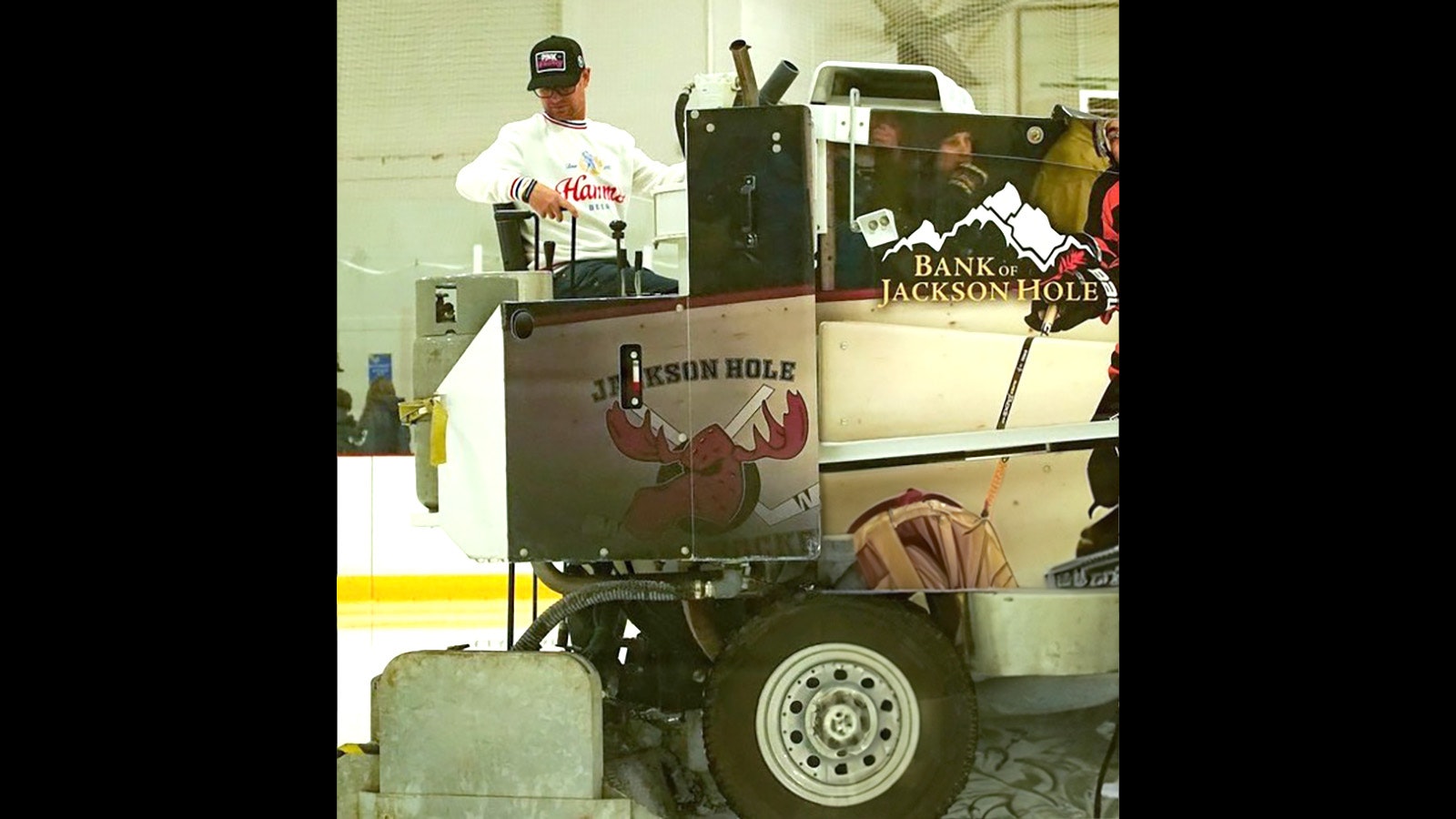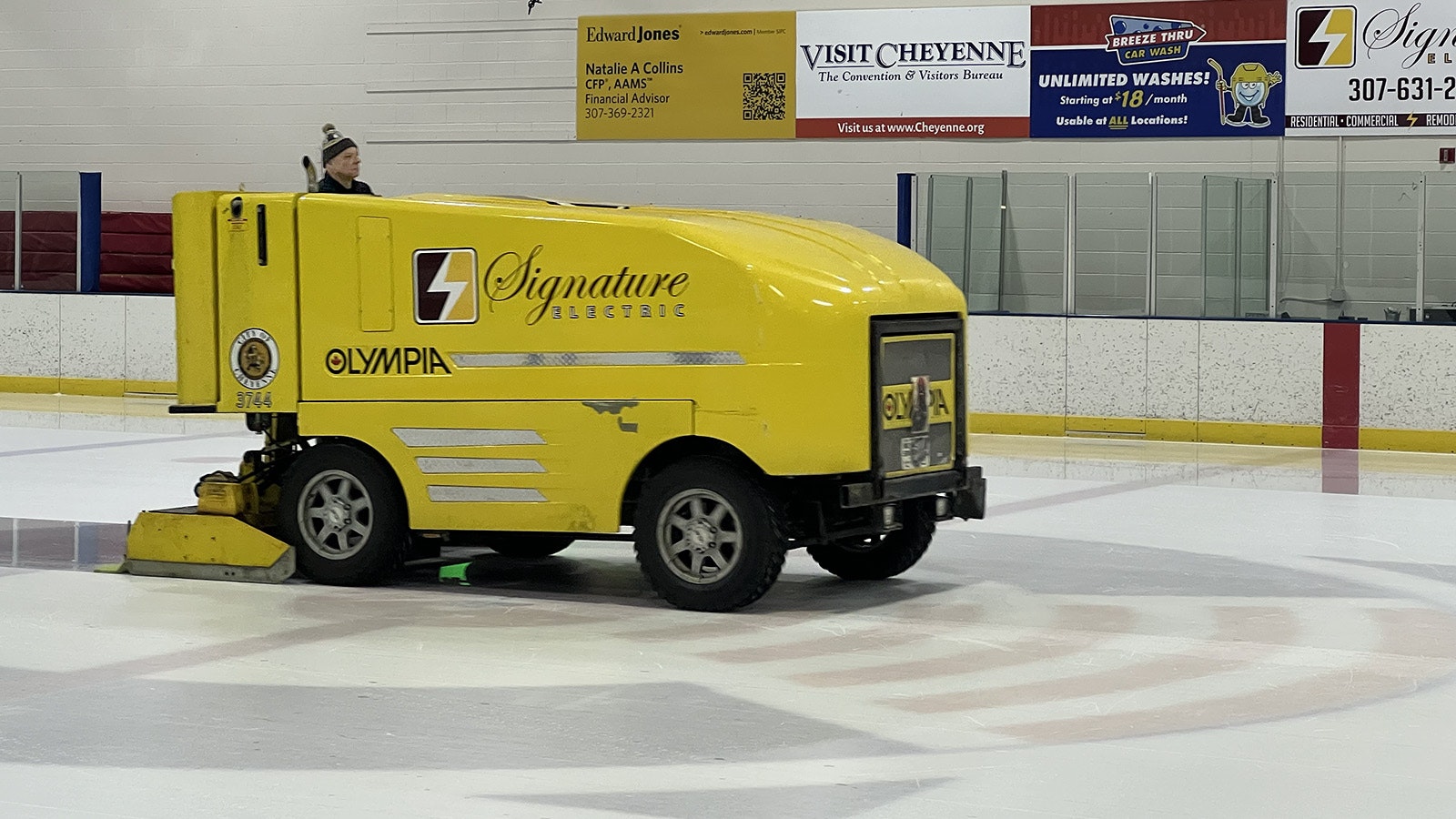Probably everyone has seen the meme, the slow-news-day story titled: “How long would it take to Zamboni Lake Superior?”
It seems to be making the rounds again this early winter season. It’s recycled news from a Feb. 23, 2019, UP Supply Co. story posted by the Yooper Steez website that celebrates everything upper peninsula in Michigan since 2008. The Detroit Free Press did a story on it, which you can read here.
We thought we would give the story a bump for the new year. But in true Cowboy State Daily fashion, we Wyomingized it and double-checked the numbers.
Anything worth doing is worth doing right. We didn’t just accept the figures gospel. Trust but verify, right? We deconstructed the math, made sure it checked out with not one, but two certified ice resurfacers in Wyoming.
Plus, we learned a lot more about the inner workings of a Zamboni than we will likely ever know what to do with.
Why It’s Called A Zamboni
Before putting our reliable Zamboni driver behind the wheel on one of Wyoming’s frozen lakes, let’s first describe a whole bunch of what’s going on with a typical ice resurface.
First, notice Zamboni is capitalized. The ice resurfacing machine is the invention of Frank Zamboni. He needed a way to clean and smooth a massive sheet of ice after he opened Iceland in Paramount, California.
At its opening in 1940, Iceland was one of the largest outdoor rinks in the world with 20,000 square feet of ice surface — enough to safely accommodate about 800 skaters at the same time.
Throughout the 1940s, after plenty of trial and error, Zamboni perfected his invention in 1949 and received a patent for the “Model A Zamboni Ice Resurfacer” in 1953.
Today, the name Zamboni has become synonymous with the device. It’s one of the many eponyms (similar to deonyms) like Band-Aid, Kleenex or Xerox. Despite trademark rights, these products have simply become generically known by their inventors’ names.
Zamboni has even come to represent a noun or a verb (as in “the ice is always Zam’d between periods”).
In addition to the Zamboni, Olympia is another brand name ice resurfacing machine. That 50-year-old family owned company based in Elmira, Ontario.

Zamboni 101
“At the Cheyenne Ice and Events Center we use an Olympia. Two, in fact,” said GM Jeff Gillotti. “We have a 1994 originally purchased by the rink when it opened in 2020. We like it sometimes because its old school. Our main machine is a 2006 Olympia. We bought it used for $85,000, I think.”
The differences between the brands are minimal. One ice resurfacer is pretty much like another. Their jobs are identical.
“Essentially, what you are trying to do is fill holes and smooth the ice surface. With every pass you scrape with the blade and drop water,” Gillotti explained.
“Depending on what type of activity sometimes you will do a dry cut if you are leveling the rink or leave it with a dry cut for something more specific like broom ball,” he added. “For curling, you would do a wet cut followed by a dry cut. For most user groups, you do the wet cut.”
Sound right, TJ?
TJ Thomas is head Zammer and director of operations at Snow King Sports and Events Center in Jackson, Wyoming. A proverbial “rink rat” originally from Eveleth, Minnesota, Thomas has forgotten more about ice than most will ever know.
“The blade is shaving the ice while laying down hot water (that) is filling in skate marks,” Thomas said. “Speed is important. Too fast won’t give you a nice shave, too slow and you are laying down too much water.”
Adult hockey players tear up the ice more than any other activity. Top end figure skaters can leave some impressive gouges, a result of toe-pick takeoffs and hard landings. But 20 minutes of fast-paced hockey will really chew up the ice.
“I usually turn a quarter valve open, depending on how much water you want to disperse. Maybe if they really gouged it up, I will open a half valve,” Gillotti said. “We will use about 200 to 275 gallons each time. The heated water is about 140 to 145 degrees Fahrenheit.”
Thomas guesses his Zamboni Model 546 has a 200-gallon water tank and he uses at least half that per Zam.
Both arenas keep their ice thickness somewhere between 1 and 1.5 inches. Typical pro hockey arenas are usually 1 inch max, many kept at 3/4-inch.
Ice is kept colder and faster for hockey, usually around 16-18 degrees. Figure skaters would rather the temps be up around 20-22 degrees for a softer, springier feel.
Large And Lumbering
Everyone has seen the ice resurfacing machine in action. It’s not a speed demon. Thomas can Zam his rink in Jackson in about 8-10 minutes on average. Gillotti’s Olympia will do his rink in Cheyenne in about 10-12 minutes, he said.
At NHL games, two Zambonis work in tandem to surface the ice. It makes the job faster, but not by much. It’s still about 10 minutes to resurface and then another 3-4 to let the water freeze good.
“It’s a little for show, I think,” Thomas said. “Plus, they are going a lot slower than us and throwing down a shit-ton of water.”
Once speed and surface area are known variables, one can make a ballpark (ice rink) estimate extrapolated out to larger surfaces. Theoretically. We’re talking about Zamboni drivers here, not quantum physics majors. String theory to these guys sounds like stuff you want to keep out of the snow intake tank.
Thomas wouldn’t even take a crack at it. Gillotti said he ran some numbers, but couldn’t guarantee they were trustworthy.
Extreme Resurfacing
Back to the UP Supply Co. meme and story. Their number crunchers figured it would take one Zamboni, running continuously about 693 years to resurface Lake Superior — the largest freshwater lake in the world.
Here’s how they got there.
One frozen Lake Superior is 31,700 square miles, equal to 52,020,513 ice rinks. UP Supply estimated 7 minutes to cover a standard 17,000-square-foot (200 by 85 feet) rink. That’s lead-foot fast.
Incidentally, a Zamboni machine travels about 3/4 of a mile during a single resurfacing of a hockey rink.
The Superior job would spec out at about 39,015,384 square miles. That comes out to 364,143,591 minutes to get Superior covered. That’s assuming no breaks for refueling, blade changing, driver changeovers, etc.
Gillotti assured blade changes would be essential. He swaps his out once a week. Same with Thomas. That means a stop to change blades every eight hours of ice time, Gillotti estimated; a task that takes an hour to do.
Gillotti took on Fremont Lake in the Wind River Mountains as his speculative lake Zam.
He reversed engineered his rink size to 0.00060979109 square miles.
He’s right.
Figuring a comfortable 15 minutes to cover that area, which would include time for refueling and emptying the machine, but not any maintenance, Gillotti figured he could get the 5,050-acre lake done in about 4.5 months — 134.88 days to be exact.
By the way, the Yoopers went with a straight 7-minute Zam to get their answer for Lake Superior.
“I would be concerned about bumps on the lake. It’s not going to be an Olympic Zam, but we could get it to skate on,” Gillotti promised.
Fremont is fairly small compared to other noteworthy lakes in Wyoming.
By Gillotti’s observations, Fontenelle Reservoir (8,000 acres) would take seven months. Glendo Reservoir (10.5 months), Jackson Lake (22 months), Flaming Gorge (three years) and Yellowstone Lake (a little over six years).
Gillotti said he would tackle the lake job about the same as a rink — two passes around the shoreline (hockey boards) to build that back up, and a cut at the center to level.
‘I Wanna Drive the Zamboni’
Cue the Gear Daddies, we know you want to take a spin in the Zamboni. Thomas and Gillotti figure they could get the average person up to speed in a couple weeks.
Thomas is confident most people will get the hang of the basics pretty quickly. Things like the pattern, the right speed, etc. But there is a lot to remember.
“The big thing is it doesn’t drive like a car. You take your foot off the gas and it will immediately stop without coasting,” Thomas said. “It probably takes a good solid 10 Zams and you should have it down. Conditioner, augers, elevator, water — you need to be mindful of a lot.”
Gillotti has about nine people resurfacing his rink on a regular basis.
“It does not take that long to get someone proficient. I have some incredibly bright people here. It usually takes about a week riding around with Tim our maintenance foreman,” Gillotti explained. “Second week, they solo on their own. Teach them the pattern, routine maintenance, stuff like that. Usually by about four or five hours they are soloing by themselves.
“I would trust any of my guys resurfacing an NHL rink. Some of them don’t like big crowds so I might rather they do a Coyote game over, say, the Avalanche.”
Jake Nichols can be reached at jake@cowboystatedaily.com.










